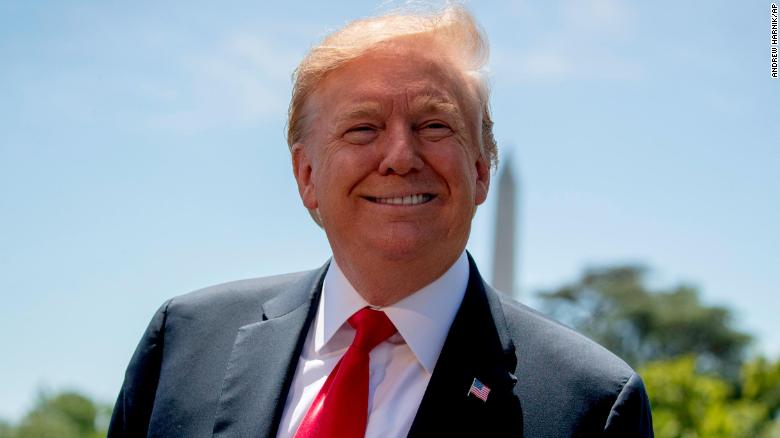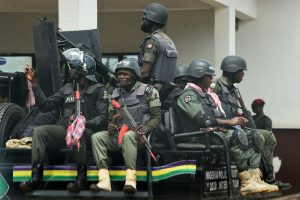Trump dances with danger in Middle East by deploying aircraft carrier and a peace plan

The US appears to be banging war drums at the same time it’s, conversely and perhaps superficially, extending an olive branch just a few hundred miles away.But the events in the Levant and the Persian Gulf could be two sides of the same coin. Both are aimed at strong-arming parties into accepting the tough demands of America and its allies, and both could propel decades-long tensions toward a new, and possibly more violent, chapter in the region’s history.Charting dangerous waters in the Persian GulfFor long-time experts in the region, recent events in the Persian Gulf tread into dangerous territory. The escalation of tensions between Iran and the US, as well as its allies, could easily spiral out of control. All the while, Trump has intensified his bid to get Iran to negotiate. When Trump first pulled out of the landmark nuclear accords in 2018, he slammed it as a “bad deal” and tightened the noose on Iran’s economy with several rounds of sanctions. Iran’s government responded with what experts dub “strategic patience.” The Islamic Republic’s diplomats appealed to Europe for support in keeping the nuclear deal afloat, as the country, by all accounts, continued to abide by its end of the bargain. But on May 8, exactly a year after Trump’s pull-out from the deal, the tide changed. In April, Trump ratcheted up pressure on Iran, removing oil export exemptions that acted as a lifeline for sanctions-ridden Tehran, and announcing that he intended to deploy the USS Abraham Lincoln to the region. The aircraft carrier began to make its way to the Persian Gulf on May 5.Rather than absorb the shocks, Iran retaliated. It announced a part-suspension of its commitment to the nuclear accord, and said it would increase uranium enrichment, a potential step to creating a nuclear weapon. And a series of flashpoints in the region began to flare up. “The main premise of the maximum pressure campaign has been economic coercion,” said Crisis Group’s Iran analyst, Naysan Rafati. “By issuing close to 1,000 sanctions designations, by putting a ‘foreign terror organization’ tag on the [elite wing of Iran’s military] Islamic Revolutionary Guard Corps, by cutting Iran’s oil’s exports … (the US hoped) that Iran would come back to the table. “But what we’ve definitely seen is a response from Iran on the nuclear front … and the risk has always been that there would be a response on the regional front,” said Rafati. “It’s as if (the Iranians) suggest that ‘you can put us under significant economic duress, but we also have cards to play.'” It is unclear if Iran has activated its regional network of sympathetic armed groups to act on its behalf. But in the days that followed the May 8th announcement, the UAE reported a sabotage attack on four oil tankers off the coast of the strategic port city of Fujairah — Iran has denied any involvement. Iran-backed Yemen rebels mounted a first-ever attack on a Saudi oil pipeline, and a Katyusha rocket was launched into Baghdad’s Green Zone, where the US embassy is. “We’ve certainly had a series of escalations,” said Rafati. “Clearly, Iran’s ‘strategic patience’ is giving way to some degree of strategic impatience.” And there’s no end in sight. Tehran has rebuffed Trump’s overtures to talk. The economy has buckled under incessant sanctions and political discontent is rising, putting pressure on Tehran to act. The Iranian government has warned that it should not be tested, while assuring the public that it does not expect war. In countering Tehran’s rhetoric, the US largely mirrored it. US Secretary of State Mike Pompeo has said that the US does not want war, while Trump threatened to bring the “official end to Iran” in case of conflict.”Even if the (the US) aim is not to initiate some sort of armed conflict, the higher you raise tensions the more chance for a mistake, for something to happen that will spiral out of control really fast,” said former US Secretary of the Navy and former ambassador to Saudi Arabia Ray Mabus.”I think we’re significantly closer (to war), certainly than we were when we negotiated the (nuclear) treaty which from all appearances was working,” said Mabus. “Now we have a president that pulled us out of it and said ‘I can make a better deal.’ Well, he hasn’t. In fact, he’s made things much worse.” ‘The deal of the century’ Many in the region believed the days and weeks that followed the May 8 announcement to be critical. The UAE sabotage attacks sounded alarm bells in a country that consistently champions its political stability and safety. The Saudi pipeline attacks sent oil prices upward. But amid the erratic developments in the Persian Gulf, Trump’s senior advisor and son-in-law Jared Kushner unfurled the first part of his long-awaited peace plan for the Israelis and the Palestinians. The events appeared out of sync, but the underlying messages were similar. Though only the economic dimension of the so-called peace plan has been unveiled, Kushner has signaled that the Palestinians should make political concessions. “People are letting their grandfather’s conflict destroy their children’s futures. This will present an exciting, realistic and viable pathway forward that does not currently exist,” Kushner told CNN in a statement. The senior administration official said the plan would discuss four major components: infrastructure, industry, empowering and investing in people and governance reforms. The initiative comes after Trump strengthened Israel’s hand on some final-status issues such as the status of Jerusalem and the right of return for Palestinian refugees. He has recognized Jerusalem as Israel’s capital and withdrawn vital funds for Palestinian refugees. Israeli Prime Minister Benjamin Netanyahu has also vowed to annex West Bank settlements, illegal according to international law. The promise, made in the closing days of an election campaign, received no objection from the US.The Palestinians have already spurned the Kushner proposal, which centers on an economic “workshop” in the Bahraini capital to encourage investment in the West Bank, Gaza, and the region. “The Trump administration’s vision is being implemented on the ground with their decisions and positions on Jerusalem, settlements and refugees, among others,” Palestine Liberation Organization Secretary General Saeb Erekat said in a statement. Erekat said the solution to conflict “is not about improving living conditions under occupation but about reaching Palestine’s full potential by ending the Israeli occupation.”To some, the Trump administration’s sidelining of the Palestinian leadership spells the end of the two-state solution, long favored by the international community, where an independent Palestinian state would be established alongside Israel. “My hope is that (Kushner’s proposal) leads to a situation where the political deal is not released, thereby not leading to this vicious cycle where we end up with further Israeli annexations of the West Bank, the further destabilization of the Palestinian Authority, and an end to the possibility of the two-state solution,” said Hady Amr, a former deputy special envoy for Israeli-Palestinian negotiations under former President Barack Obama’s administration. “As unlikely as the two-state solution is, I still think it’s a more likely outcome than any other in the coming decade.” With both the Iranians and the Palestinians, Trump appears to try to extract major political concessions with promises of vast economic riches. “(Trump) is using a very big stick with a very small carrot,” said Iran expert Rafati. In both these cases, the moves are seen as a bid to chip away at sovereignty, and it is being met with considerable resistance. But while the counter-forces have so far rendered the political situation inert, it could soon take on new dimensions that policy-makers may be ill-equipped to tackle.







